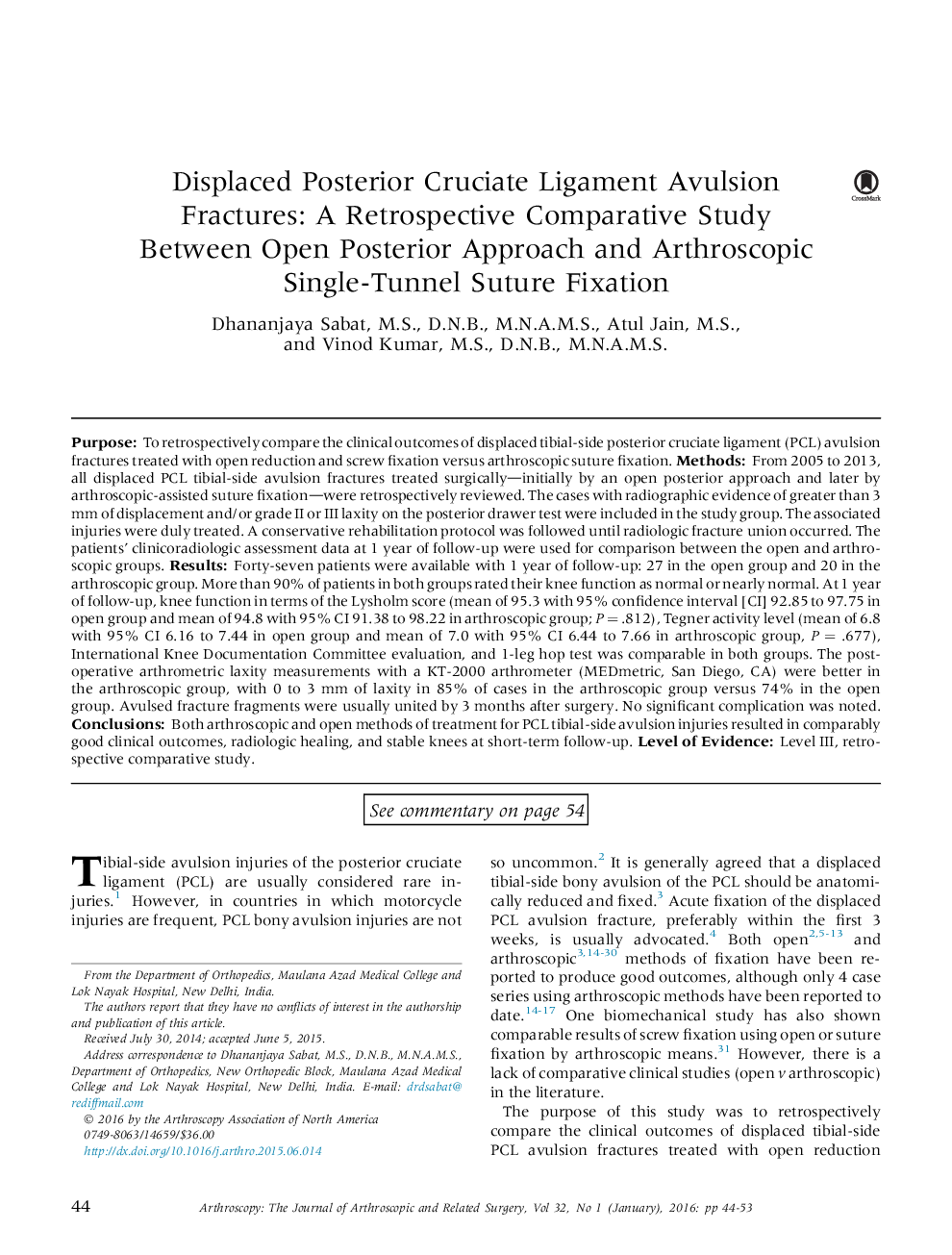| کد مقاله | کد نشریه | سال انتشار | مقاله انگلیسی | نسخه تمام متن |
|---|---|---|---|---|
| 4042255 | 1603475 | 2016 | 10 صفحه PDF | دانلود رایگان |
PurposeTo retrospectively compare the clinical outcomes of displaced tibial-side posterior cruciate ligament (PCL) avulsion fractures treated with open reduction and screw fixation versus arthroscopic suture fixation.MethodsFrom 2005 to 2013, all displaced PCL tibial-side avulsion fractures treated surgically—initially by an open posterior approach and later by arthroscopic-assisted suture fixation—were retrospectively reviewed. The cases with radiographic evidence of greater than 3 mm of displacement and/or grade II or III laxity on the posterior drawer test were included in the study group. The associated injuries were duly treated. A conservative rehabilitation protocol was followed until radiologic fracture union occurred. The patients' clinicoradiologic assessment data at 1 year of follow-up were used for comparison between the open and arthroscopic groups.ResultsForty-seven patients were available with 1 year of follow-up: 27 in the open group and 20 in the arthroscopic group. More than 90% of patients in both groups rated their knee function as normal or nearly normal. At 1 year of follow-up, knee function in terms of the Lysholm score (mean of 95.3 with 95% confidence interval [CI] 92.85 to 97.75 in open group and mean of 94.8 with 95% CI 91.38 to 98.22 in arthroscopic group; P = .812), Tegner activity level (mean of 6.8 with 95% CI 6.16 to 7.44 in open group and mean of 7.0 with 95% CI 6.44 to 7.66 in arthroscopic group, P = .677), International Knee Documentation Committee evaluation, and 1-leg hop test was comparable in both groups. The postoperative arthrometric laxity measurements with a KT-2000 arthrometer (MEDmetric, San Diego, CA) were better in the arthroscopic group, with 0 to 3 mm of laxity in 85% of cases in the arthroscopic group versus 74% in the open group. Avulsed fracture fragments were usually united by 3 months after surgery. No significant complication was noted.ConclusionsBoth arthroscopic and open methods of treatment for PCL tibial-side avulsion injuries resulted in comparably good clinical outcomes, radiologic healing, and stable knees at short-term follow-up.Level of EvidenceLevel III, retrospective comparative study.
Journal: Arthroscopy: The Journal of Arthroscopic & Related Surgery - Volume 32, Issue 1, January 2016, Pages 44–53
